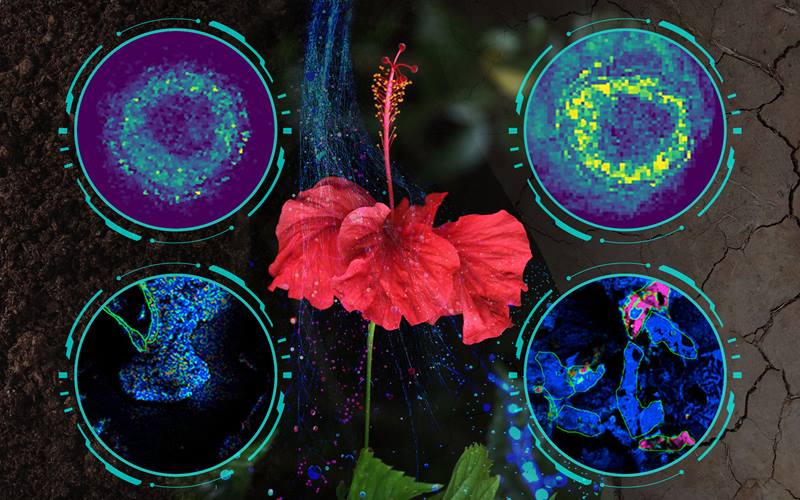The Science
Rising temperatures and increasing droughts have scientists looking for ways to better predict how plants will react to stress. Every study offers a little more information. Now, scientists have discovered a way to yield a wealth of insights in a single study. Combining three advanced research techniques that are rarely used together, they found they could pinpoint how different types of plants protect themselves from harsh conditions. Even more surprising? Plants try various strategies to assure their survival.
The Impact
When used together, the three techniques reveal a surprising amount of information about the chemical processes inside plants. Scientists can also look for patterns across plant communities. The results can help identify when plants require more water or more nutrients to keep growing during times of stress, even in diverse environments. How plants respond to drought can also have profound impacts on the movement of carbon through the environment, which ultimately influences climate.
Summary
Working under the Facilities Integrating Collaborations for User Science (FICUS) program, scientists examined the effects of drought on chemical processes inside the roots of three tropical rainforest species. The team included researchers from the University of Arizona, Pacific Northwest National Laboratory, and the University of Freiburg. To understand the plant’s chemical functioning, including how it utilized carbon, the team combined cutting-edge metabolomic and imaging technologies at the Environmental Molecular Sciences Laboratory (EMSL), a Department of Energy (DOE) user facility. They used powerful nuclear magnetic resonance spectroscopy to identify the type and structure of molecules in the plant roots. They then created detailed images of tissues using mass spectrometry (matrix-assisted laser desorption/ionization mass spectrometry) and took nanoscale measurements of elements and isotopes (nanoscale secondary ion mass spectrometry).
This combination of techniques yielded insights into different defense mechanisms plants use to survive drought. One species added woody lignin to thicken its roots. The second secreted antioxidants and fatty acids as a biochemical defense. The third appeared less affected by drought conditions, but the soil around it had a higher level of carbon. This indicates that the plant and the microbes in the soil were working together to protect the plant. Overall, this study demonstrates how multiple techniques can be combined to identify different drought-tolerance strategies and ways to keep plants thriving.
Contact
Linnea K. Honeker
University of Arizona
co-first author
linneah@email.arizona.edu
Gina Hildebrand
University of Arizona
co-first author
ginahildebrand@email.arizona.edu
Funding
A portion of this research was performed under the FICUS exploratory effort and used resources at the DOE Joint Genome Institute and EMSL, both of which are DOE Office of Science user facilities. This research was supported in part by the European Research Council and the DOE Office of Science, Biological and Environmental Research program. The Philecology Foundation and the European Research Council also provided financial support.
Publications
Honeker, L. et al., Elucidating drought-tolerance mechanisms in plant roots through 1H NMR metabolomics in parallel with MALDI-MS, and NanoSIMS imaging techniques. Environmental Science & Technology 56, 3 (2022). [DOI: 10.1021/acs.est.1c06772]
Related Links
Three Techniques, Three Species, Different Ways to Fight Drought, EMSL
Scraped from https://www.sourcearu.com
